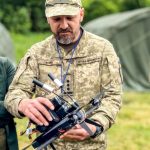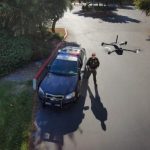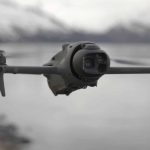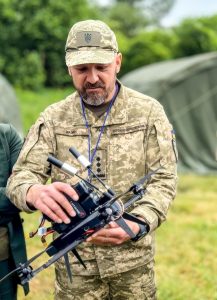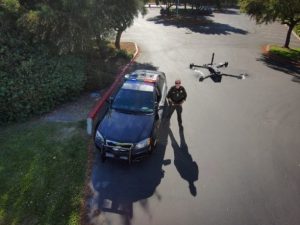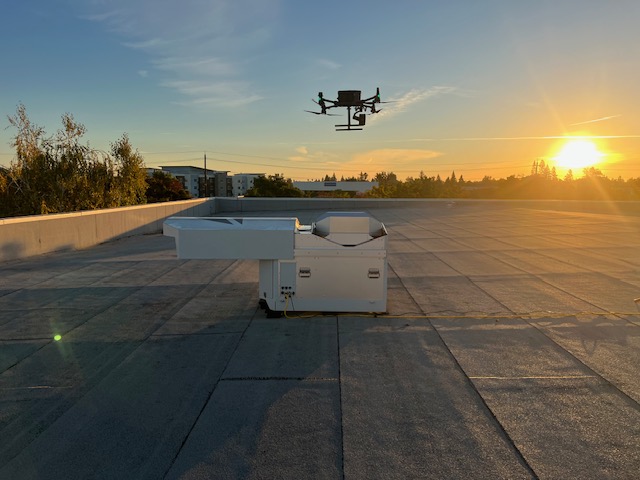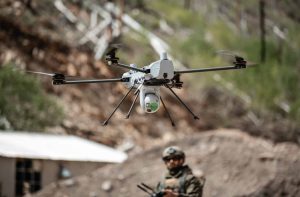How Elk Grove Police Department Established Their Drone First Responder (DFR) Program
Recent developments from the FAA have signaled that more police departments nationwide are looking to launch their drone programs this year. Building a successful drone initiative is no small feat, but the Elk Grove Police Department in California provides valuable insights into best practices for getting started.
Collaboration in Public Safety is Crucial
One significant obstacle police departments face when creating a drone program is identifying the right vendor. The ideal partner must meet the department’s unique requirements and adapt to evolving challenges. The Elk Grove Police Department (EGPD) collaborated with Mark43 in 2020 to implement their records management system (RMS) and computer-aided dispatch (CAD). By utilizing Mark43’s cloud-native services, EGPD was able to scale and integrate new technologies seamlessly. Four years later, they further advanced their operations by incorporating Mark43 CAD with the Flock Aerodome Drone as their First Responder system, thereby enhancing drone functionalities.

According to Lt. Nate Lange from EGPD, selecting a vendor that prioritizes public safety over profit is imperative for success. He noted, “In this sector, public safety must be paramount over profits. When vendors prioritize profit over the mission, it becomes evident.” The right vendor should address all departmental needs rather than simply focusing on sales. This includes ensuring that software is user-friendly for all department members.
Since launching their DFR program within the last year, the Elk Grove police force has increasingly recognized the vital role that drones play in their daily operations, from enhancing situational awareness during calls to improving officer safety when pursuing suspects.
“We deemed it too risky to operate without a drone program,” Lt. Lange remarked. “We embraced the challenge, initiated the program, and remain devoted to continually reassessing and enhancing it. Initially, we concentrated on what we needed the drone to accomplish rather than on its capabilities. This approach made all the difference.”
Enhancing Efficiency and Safety Through Drones
Since integrating the Mark43 CAD with the Flock Aerodome Drone as a First Responder, EGPD has significantly reduced its call response times. Quick responses are essential in emergencies, and cutting response times down to a minute and a half can alter the course of an incident and save lives.
“Over the past 50 years, we’ve tracked response times based on CAD data for 911 calls,” Lt. Lange continued. “Now, with drones, we’re arriving on the scene before the CAD call is even generated — we refer to this as negative response time. Previously, it took around seven minutes for officers to respond. With a drone, we’re averaging just a minute and a half.”
The drone not only hastens responses but also delivers critical information ahead of officers’ arrival. It serves as the first set of eyes on the scene, providing intel on the precise location of suspects or incidents, whether individuals are armed, and other vital details. Such insights are invaluable and previously unattainable for officers, who now benefit from real-time drone data seamlessly integrated with CAD activity, thanks to Mark43 and Flock Safety’s focus on interoperability.
This information empowers officers to make informed decisions while responding to calls. For instance, a drone might determine that a situation is manageable with a single officer, allowing others to remain on standby, or alert them that backup is needed and mobilize ample resources. Sometimes, the type of intelligence provided by drones is meticulous and impossible to obtain otherwise.
“In a pursuit involving an ATV, the drone pinpointed a suspect hiding in a construction pipe,” Lt. Lange explained. “Instead of officers systematically searching multiple pipes with flashlights—putting themselves at risk—we had specific intel: ‘pipe seven, north end.’ The difference is stark; having live video makes situational awareness immediate and comprehensive.”
At night, the drone’s utility becomes particularly noteworthy for EGPD. With fewer officers on duty during nighttime shifts, having a drone operational provides a tactical advantage that is hard to measure.
“Flying at night was essential for us,” Lt. Lange stated. “It enhances our operational capacity during times when we have the fewest additional resources. For our community, we often lack extra units on evenings or weekends, making it critical to have a system that supports patrol efforts with aerial operations and situational awareness.”
Building Trust Through Education and Transparency
Despite the advantages drones bring to EGPD and other law enforcement agencies, establishing trust and educating community members remains a significant challenge. Unfamiliar drone operations can easily confuse or alarm residents, fostering misconceptions or fear. Recognizing this, EGPD prioritized community education before launching their program.
“We don’t wait for questions; we proactively inform the community about what we’re doing, what we won’t do, and the safeguards in place,” Lt. Lange stated. “Our website features a portal where all our drone flights are publicly accessible. If our usage ever deviates ethically, the city council has the authority to halt it.”
EGPD emphasizes that drones are not substitutes for officers, K9 units, or existing aerial support like helicopters. Instead, they enhance personnel capacity. Drones are designed to tackle the same challenges using innovative tools, serving as support rather than replacements for current technologies.

The department’s commitment to transparency is demonstrated through initiatives like “Barbecue in the Beat,” an event where officers invite community members to engage with drones, ask questions, and experience the technology firsthand. This interaction fosters a culture of transparency, crucial for managing public perceptions of how emerging technologies are employed by law enforcement.
Furthermore, EGPD offers exceptional transparency through a virtual archive of each drone flight, accessible via their department website. Every flight is recorded and stored for a year, with any community member able to inquire about specific flights, obtaining details such as the corresponding case number and flight path. This level of openness is vital for community acceptance of drone utilization by police, reassuring residents that they’re solely deployed for public safety operations.
“Success hinges on a comprehensive mindset rather than any isolated tactic,” Lt. Lange concluded. “Transparency encompasses outreach, public access, oversight, and deliberate efforts to show the community our operations.”
For original article: Original Article
